Though the Norse pantheon is vast, many of its members remain somewhat obscure. Norse myths were transferred orally in the pre-Christian era, and in those centuries before the written word, stories and their characters tended to be lost, changed, or supplanted by something that came later.
So, while names like Odin or Loki are familiar to many, other gods remain less well-known. This can be for good reason – some of these gods have little remaining lore, and the record of their cults, if they existed at all, may be sparse indeed.
But some also straddle that line – gods that on the one hand still leave a mark on culture and history, yet whose record has survived only in fragments. Let’s take a look at one Norse goddess whose fragmentary mythos belies the importance she seems to have had in Norse mythology – the Norse goddess Sif.
Table of Contents
Depictions of Sif
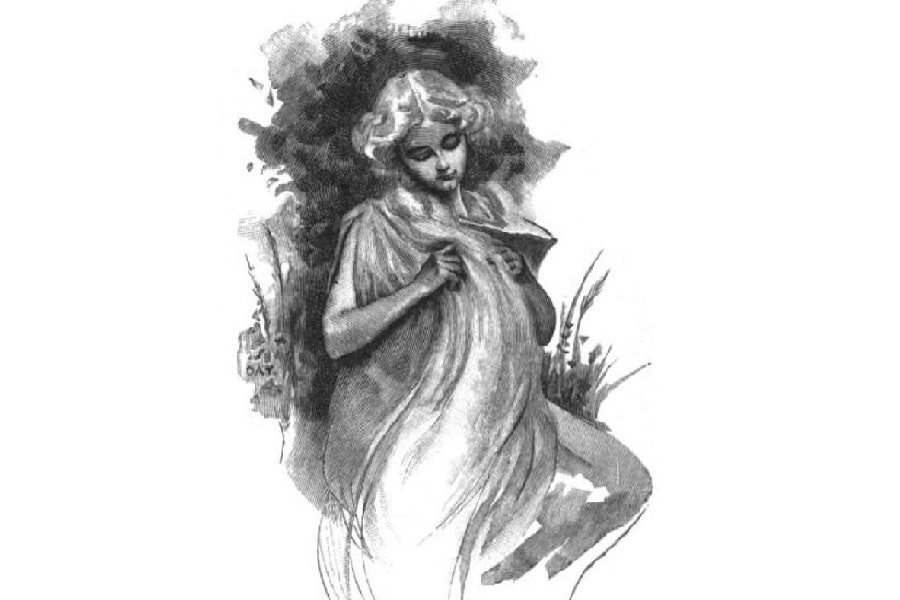
Sif’s most defining trait – the one most noted in reference to the goddess – was her long, golden hair. Compared to wheat ready for harvest, Sif’s golden tresses were said to flow down her back and be without flaw or blemish.
The goddess was said to wash her hair in streams and spread it out on rocks to dry in the sun. She would brush it regularly with a special jewel-encrusted comb.
Her descriptions give us little detail beyond her lustrous hair, except to note her incredible beauty. The only other major detail we have of her is her status as the wife of the thunder god, Thor.
Sif the Wife
Sif’s most prominent role in the surviving Norse myths – indeed, her defining role – is that of Thor’s wife. There are few references to the goddess that don’t in some fashion involve – if not hinge on – this relationship.
Take the multiple references to Sif in the Hymiskvitha, one of the poems from the Icelandic compendium known as the Poetic Edda. Sif doesn’t appear in the poem herself, but Thor does – and he is referenced not by his own name, but as “Sif’s husband.”
This is doubly interesting when we consider the root of the goddess’s name. Sif is the singular form of sifjar, an Old Norse word meaning “relation by marriage” – even Sif’s name centers around her role as the wife of the god of thunder.
Questionable Fidelity
Yet her allegiance to that role may not be as firm as expected. There are at least two accounts in surviving myths that hint that Sif may not have been the most faithful of wives.
In the Lokasenna, from the Poetic Edda, the gods are at a great banquet, and Loki and the other Norse gods and goddesses are flyting (i.e, exchanging insults in verse). Loki’s taunts include accusations of sexual impropriety against the other gods.
But as he goes about slinging insults, Sif approaches him with a horn of mead, bidding him to take the mead and drink in peace rather than accuse her of anything, as she is blameless. Loki, however, retorts that he knows otherwise, claiming that he and Sif had previously had an affair.
Whether this is just another insult in the vein of all the others he’d directed at the other gods or something more is not revealed. Sif’s preemptive bid for silence, however, naturally raises suspicions.
In another tale, this one from the poem Hárbarðsljóð, Thor is traveling home when he encounters what he thinks is a ferryman but which is actually Odin in disguise. The ferryman refuses Thor’s passage, and berates him with insults on everything from his clothes to his cluelessness about his wife, claiming that he knew she was at that moment with a lover.
It’s impossible to say whether this was a serious accusation or just more taunting from Odin at a moment when he was inclined to hassle his son. But alongside the account of Loki’s accusation, it certainly starts to form a pattern. And given that Sif may have associations as a fertility goddess (more on that later) and fertility gods and goddesses tend to be promiscuous and prone to infidelity, that pattern has some credibility.

Sif the Mother
As Thor’s wife (faithful or not), Sif was stepmother to his sons Magni (born to Thor’s first wife, the jötunn giantess Járnsaxa) and Modi (whose mother is unknown – though Sif is an obvious possibility). But she and her husband did have a daughter together – the goddess Thrud, who may or may not also be a valkyrie of the same name.
Magni was known for his incredible strength even as a child (he aided his father in a duel with the giant Hrungnir when he was still a newborn). About Modi and Thrud we know substantially less, outside of a few scattered references.
But there was another god that called Sif “mother,” and this one was much more significant. By an earlier, unnamed husband (though there is speculation it may be the Vanir god Njord), Sif had a son – the god Ullr.
Associated with snow and winter sports, particularly skiing, Ullr would at first glance seem to be a “niche” god. Yet he seemed to have an outsized influence that suggested there was much more to him.
He was known to be strongly associated with archery and hunting, very much in the vein of the goddess Skadi (who, interestingly, was married to Ullr’s possible father, Njord). There is strong evidence that he figured heavily in the swearing of oaths, and even led the gods when Odin was in exile. A number of place names seem connected to his name, such as Ullarnes (“Ullr’s headland”), further signifying that the god had an importance in Norse mythology that was lost by the time the myths were recorded in the 13th Century.
Sif the Goddess
This seems to have been true of Ullr’s mother as well. While there are only scant references to Sif in both the Poetic Edda and the Prose Edda – and none in which she appears as an active player – there is ample evidence that she was a much more important goddess than the simple designation “Thor’s wife” would suggest.
Indeed, looking back at the passages in the Hymiskvitha, it’s interesting to note that Thor is only mentioned as Sif’s husband when he is – to modern readers, anyway – the more prominent god. It’s impossible to ignore the possibility that this particular poem harkens back to the time when their notoriety may have been reversed.
As another example, there is an interesting possibility that Sif is referenced in the epic Beowulf. The earliest manuscript of the poem dates from about 1000 C.E. – a few centuries before the Edda, at least offering the possibility that they may contain glints of pre-Christian mythology later lost. And the poem itself is set in the 6th Century, raising the possibility that it’s quite a bit older than the dating of the manuscript would suggest.
In the poem, there are a few lines of interest regarding Sif. The first is when Wealhtheow, queen of the Danes, is serving mead at a feast to calm emotions and restore peace. The event bears such similarity to Sif’s actions in Lokasenna that a number of scholars see it as a possible reference to her.
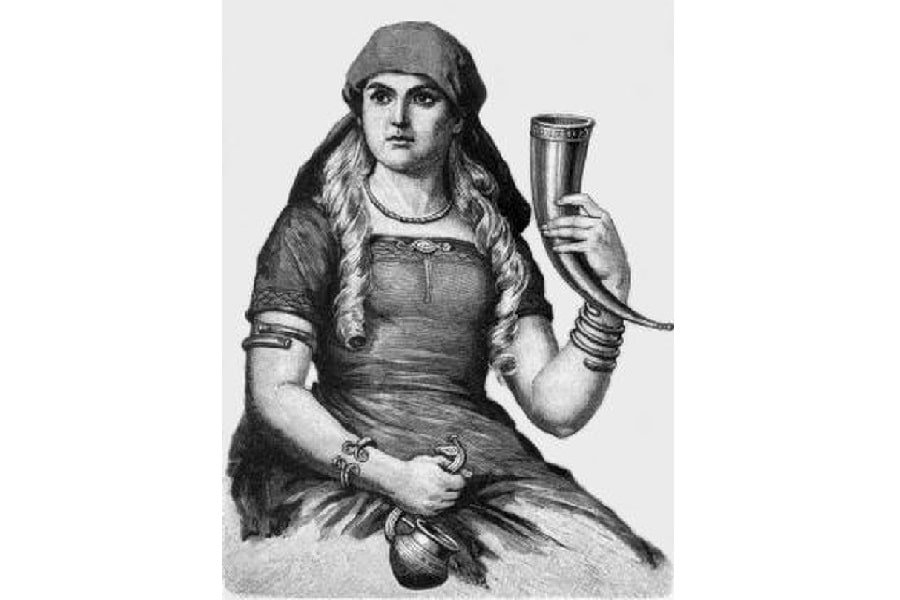
Further, there are lines later in the poem, starting around line 2600, where sib (the Old English variant of the Old Norse sif, the term for relationship from which Sif’s name derives) seems to be personified. Noting this atypical usage, some scholars point to these lines as possible references to the goddess – which may in turn hint that she held a more exalted place in Norse religious life than the surviving evidence suggests.
That there’s a little direct reference to her role in the Norse pantheon may be a result of who recorded her story. As noted, Norse myths were only recorded orally until writing arrived in the Christian era – and it was Christian monks who largely did the writing.
There’s a strong suspicion that these chroniclers were not without bias. It’s widely believed that they added oafish elements to depictions of the Dagda from Irish myth – it’s very possible they, for whatever reason, saw fit to exclude portions of Sif’s mythology as well.
READ MORE: 18 Celtic Gods and Goddesses: Ancient Celtic Pantheon
An Earth Mother?
From what little we do have, Sif seems to be associated with fertility and plant life. Her golden hair has been compared to wheat by some scholars, which would suggest a connection to grains and agriculture similar to that of the Roman goddess Ceres.
READ MORE: Roman Gods and Goddesses: The Names and Stories of 29 Ancient Roman Gods
Another clue lies with a particular type of moss, Polytrichum aureum, commonly called haircap moss. In Old Norse, it was known by the haddr Sifjar, or “Sif’s hair,” due to the yellow hair-like layer on its spore case – a strong hint that the Norse perhaps saw at least some association between Sif and plant life. And there is at least one instance in the Prose Edda in which Sif’s name is used as a synonym for “earth,” further pointing at her possible status as an “earth mother” archetype.
Additionally, Jacob Grimm (one of the Brothers Grimm and a scholar on folklore) noted that, in the town of Värmland in Sweden, Sif was referred to as a “good mother.” This is further evidence that she may at one time have held a prominent status as an ancient fertility goddess and earth mother similar to the Irish Danu or the Greek Gaia.
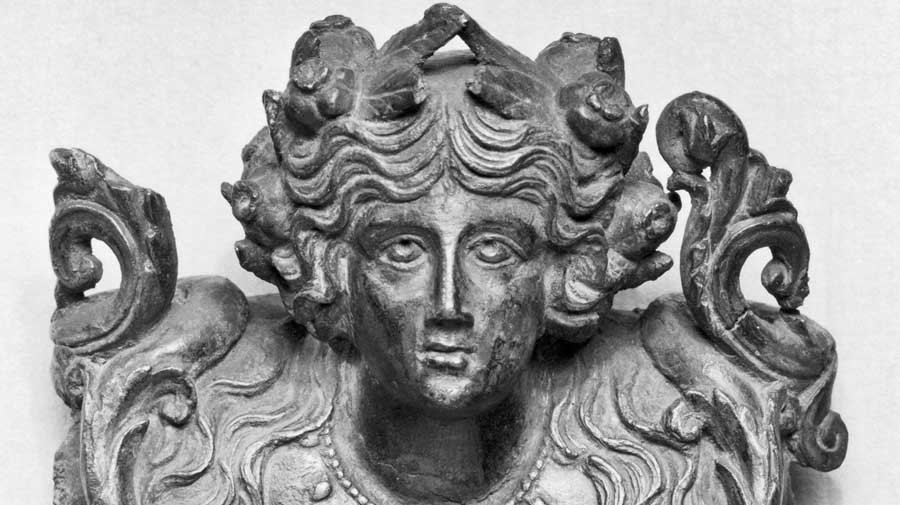
READ MORE: 41 Greek Gods and Goddesses: Family Tree and Fun Facts
Divine Marriage
But perhaps the simplest proof of Sif’s status as a fertility goddess is who she’s married to. Thor may have been a storm god, but he was also strongly associated with fertility, being responsible for the rains that made the fields fertile.
And a sky god of fertility was frequently paired with compatible earth or water and sea goddess. This is the hieros gamos, or divine marriage, and it was a feature of a number of cultures.
In the ancient civilizations of Mesopotamia, creation was seen as a mountain, the Anki – with the male upper portion, An, representing the heavens and the lower, female Ki representing the earth. This concept continued in the marriage of the sky god Apsu to the sea goddess Tiamat.
Likewise, the Greeks paired Zeus, the preeminent sky god, with Hera, a goddess of the family who is believed to have had earlier associations as an Earth Mother. Likewise, the same relationship occurs with Thor’s own father, Odin, and his mother Frigg.
While little else remains to suggest Sif’s role as a fertility goddess, the hints we have make it a very likely association. And – assuming she held that role initially – it’s just as likely she was later supplanted by goddesses like Frigg and Freyja (who some scholars speculate may have both descended from a single, earlier Proto-Germanic goddess).
Sif in Mythology
As previously noted, Sif gets only passing mentions in most Norse myths. There are, however, a few stories in which she is more prominently mentioned.
Even in these, however, Sif appears merely as the motivation or catalyst that pushes another pagan god or gods into action. If there were stories in which she was a true protagonist, they haven’t survived the transition from oral tradition to the written word.
We are not even told Sif’s fate in Ragnarok, the prophesied apocalypse of Norse mythology. That is less unusual, however – except for Hel, no Norse goddesses are mentioned in the Ragnarok prophecy, and their fates as a whole seem to have been less of a concern than those of their male counterparts.
Sif’s Hair
Sif’s passive role is exemplified in what is inarguably her most famous tale – the cutting of her hair by Loki, and the ramifications of that prank. In this story, as told in the Skáldskaparmál in the Prose Edda, Sif acts as a springboard to move the story forward, but she herself plays no part in the events – indeed, her role could easily be replaced with some other precipitating event with little change to the overall story.
The tale begins when Loki, as a prank, decides to cut off Sif’s golden hair. As already noted, her hair was Sif’s most prominent feature, which made Loki – apparently feeling even more mischievous than usual – think that leaving the goddess shorn would be hilarious.
What it actually accomplished was to infuriate Thor, and the thunder god grabbed hold of the trickster god with murderous intent. Loki saved himself only by promising the furious god he would replace Sif’s lost hair with something even more luxurious.
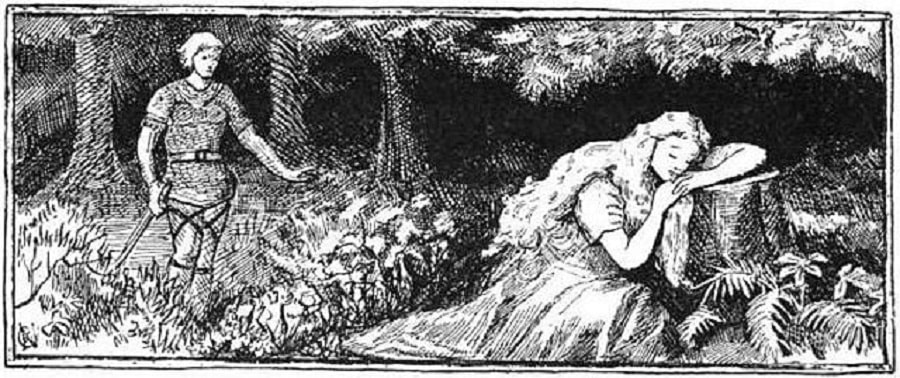
Loki’s Journey
Released by Thor, Loki quickly heads down to Svartalfheim, the dwarves’ underground realm. He intends to ask the dwarves, known as unrivaled craftsmen, to make a suitable replacement for Sif’s hair.
In the dwarves’ realm, Loki found Brokk and Eitri – a pair of dwarven craftsmen known as the Sons of Ivaldi. They agreed, and crafted an exquisite golden headdress for the goddess, but then they also went above and beyond Loki’s request by volunteering to craft five additional magical items as gifts to the gods.
The Gifts of the Dwarves
After Sif’s headdress was completed, the dwarves moved on to creating their other gifts. As Loki stood waiting, they quickly produced two additional magical items of exceptional quality.
The first of these was a ship, Skidbladnir, said in Norse myths to be the finest of all ships. Whenever its sail was unfurled, fair winds found it. And the ship was capable of being folded small enough to fit in one’s pocket, allowing its user to carry it easily when it wasn’t needed.
The second of their gifts was the spear Gungnir. This is the famous spear of Odin, which he would wield at the battle of Ragnarok, and it was said to be so perfectly balanced it never failed to find its mark.
Loki’s Wager
Thus, with three of the total six gifts completed, the dwarves set about continuing their work. But Loki’s mischievous mood had apparently not left him, and he couldn’t resist making a wager with the dwarves, betting his own head that they could not craft three more items as exceptional as the first three.
The dwarves accept, and Eitri sets about crafting Gullinbursti, a golden boar that could run or swim faster than any horse, and whose golden bristles glowed to light up even the darkest gloom. The boar would be a gift for Freyr, who Norse legend says rode it to Baldr’s funeral.
Nervous about losing his wager, Loki attempted to sway the outcome. Transforming himself into a biting fly, Loki bit Eitri on the hand to distract him while he worked, but the dwarf ignored the pain and completed the board flawlessly.
Brokk then sets to work on the next gift – a magical ring, Draupnir, meant for Odin. Every ninth night, this golden ring would birth eight more rings just like itself.
Now even more nervous, Loki attempted to interfere again, and this time Loki the fly bit Brokk on the neck. But like his brother, Brokk ignored the pain and finished the ring without issue.
With now all but one of the gifts completed successfully, Loki began to panic. The final gift of the dwarves was Mjölnir, Thor’s famous hammer that would always return to his hand.
But as the brothers worked on this final item, Loki stung Brokk above the eye, causing blood to run down and obscure his vision. Unable to see what he was doing, Brokk nonetheless continued working, and the hammer was successfully crafted – though, because Brokk had been blinded, the handle was slightly shorter than planned. Nonetheless, it was a gift as exceptional as the rest.

The Loophole
With the gifts completed, Loki hurriedly returns to Asgard before the dwarves so he can disburse the gifts before the gods learn of the wager. Sif gets her golden headpiece, Thor his hammer, Freyr the golden boar and the ship, and Odin the ring and spear.
But the dwarves arrive just after the gifts have been distributed, telling the gods of the wager and demanding Loki’s head. Even though he’d just brought them wondrous gifts from the dwarves, the gods are more than willing to grant the dwarves their prize, but Loki – trickster that he is – found a loophole.
He had promised the dwarves his head, but his head only. He’d not wagered his neck – and they had no way to take his head without cutting his neck. Therefore, he argued, the wager could not be paid.
The dwarves talk this over amongst themselves and finally decide they can’t work around the loophole. They cannot take his head, but – with the consent of the assembled gods – they sew Loki’s mouth shut before returning to Svartalfheim.
And again, it has to be pointed out that, while this is considered the most significant surviving myth concerning Sif, she’s barely in it – she’s not even the one who confronts the trickster about cutting her hair. The story instead centers on Loki – his prank and the fallout of it – and changing the impetus from the shorning of Sif to a different prank he needed to atone for would leave the story almost entirely the same.
Sif the Prize
Another story that features Sif in a passive way is the story of Odin’s race against the giant Hrungnir. Odin, having acquired a magical horse, Sleipnir, rode it through all the Nine Realms, ultimately arriving in the Frost Giants’ realm of Jotunheim.
The giant Hrungnir, while impressed by Sleipnir, boasted that his own horse, Gullfaxi, was the fastest and best horse in the Nine Realms. Odin naturally challenged him to a race to prove this claim, and the two set off through other realms back toward Asgard.
Odin reached the gates of Asgard first and rode inside. Initially, the gods intended to shut the gates behind him and block the giant’s entry, but Hrungnir was too close behind Odin and slipped in before they could.
Bound by the rules of hospitality, Odin offered his guest a drink. The giant accepts the drink – and then another, and another, until he is roaring drunk and threatening to lay waste to Asgard and take Sif and Freyja as his prizes.
Quickly tiring of their belligerent guest, the gods send for Thor, who challenges and then kills the giant. The huge corpse fell on Thor, pinning him until his son Magni lifted the giant and freed him – for which the child was given the dead giant’s horse.
Again, the story involves Sif as the object of the giant’s desire. But, as with the story of Loki and the dwarves’ gifts, she plays no real role and is merely the “shiny object” that triggers the actions of others.
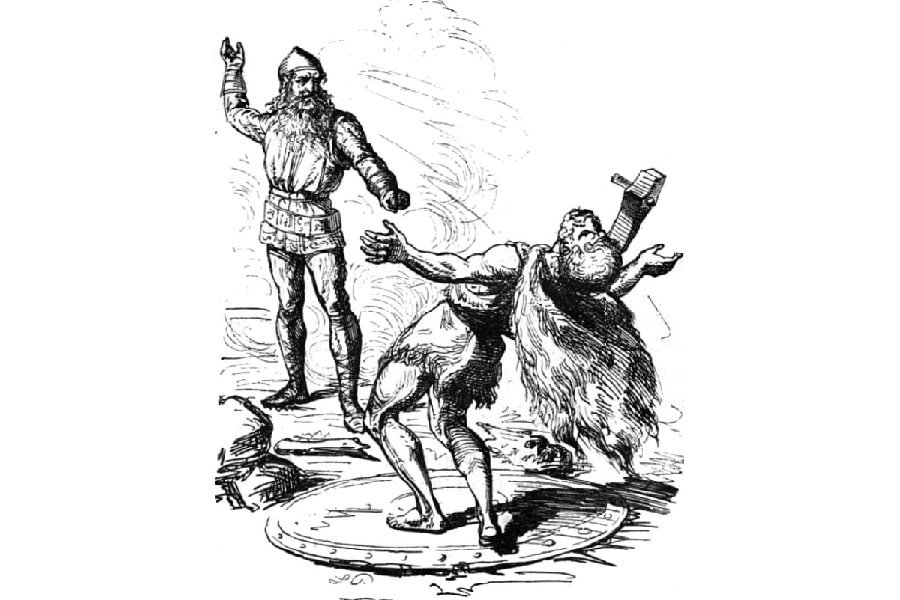
In Summary
Extrapolating the truth from pre-written cultures is a dicey game. It requires cobbling together clues in whatever lore survived to be written down, along with the hints scattered in place names, monuments, and surviving cultural practices.
For Sif, we have very little in either case. Her written tales have only the barest hints that she may have held significance as a fertility or earth goddess. Likewise, if there are monuments or practices that reference her, we have largely lost the cipher keys we would need to recognize them.
When trying to recreate mythologies beyond what survives in written form, there is always a danger that we will unconsciously (or even deliberately) imprint our own expectations or desires upon them. And even beyond that, there is the danger we will incorrectly translate the scraps and write a story that bears no true resemblance to the original.
We can say Sif seems to have been a more important figure than we know today, but we can’t say for certain why. We can point out her apparent earth-mother connections and still recognize that they are sadly inconclusive. But we can at least hold on to what we do know – Sif, the golden-haired goddess, Thor’s wife, mother of Ullr – and cautiously remember her for the rest.